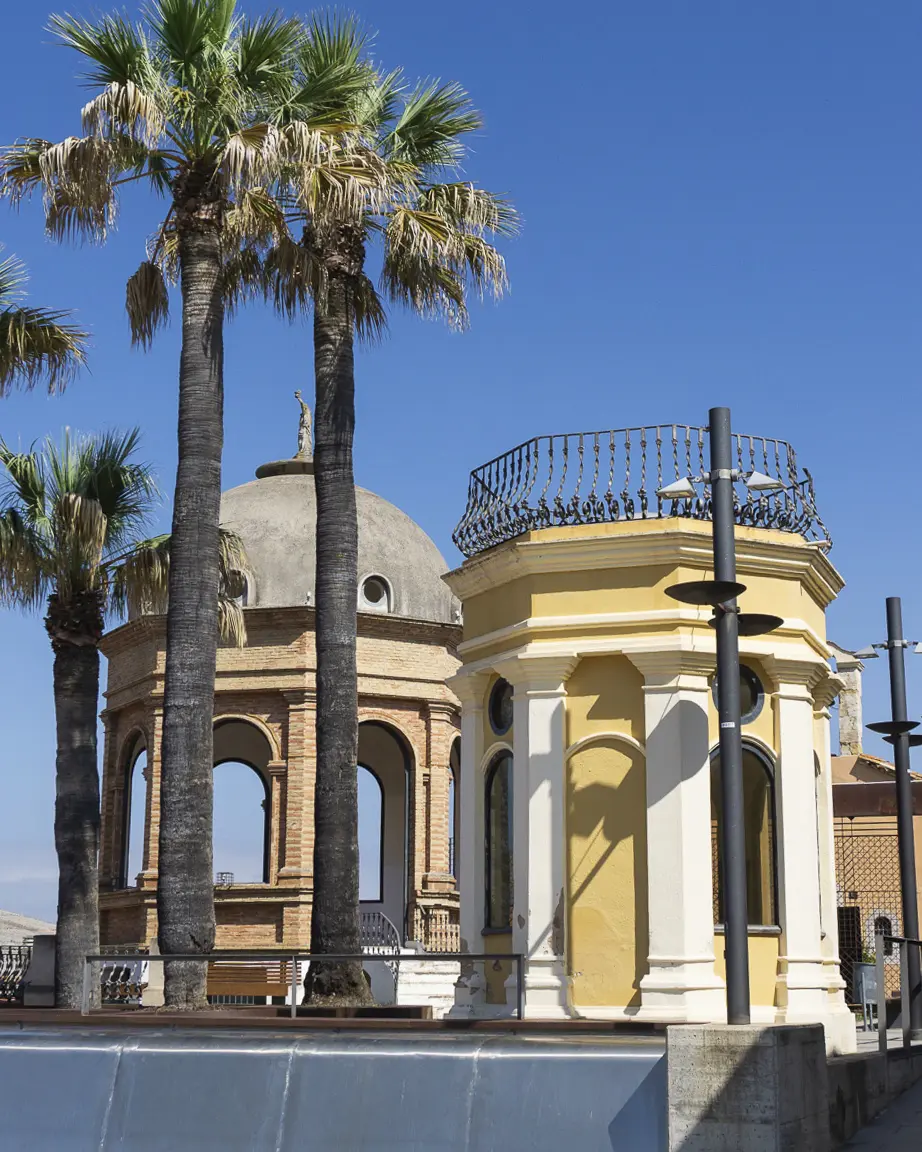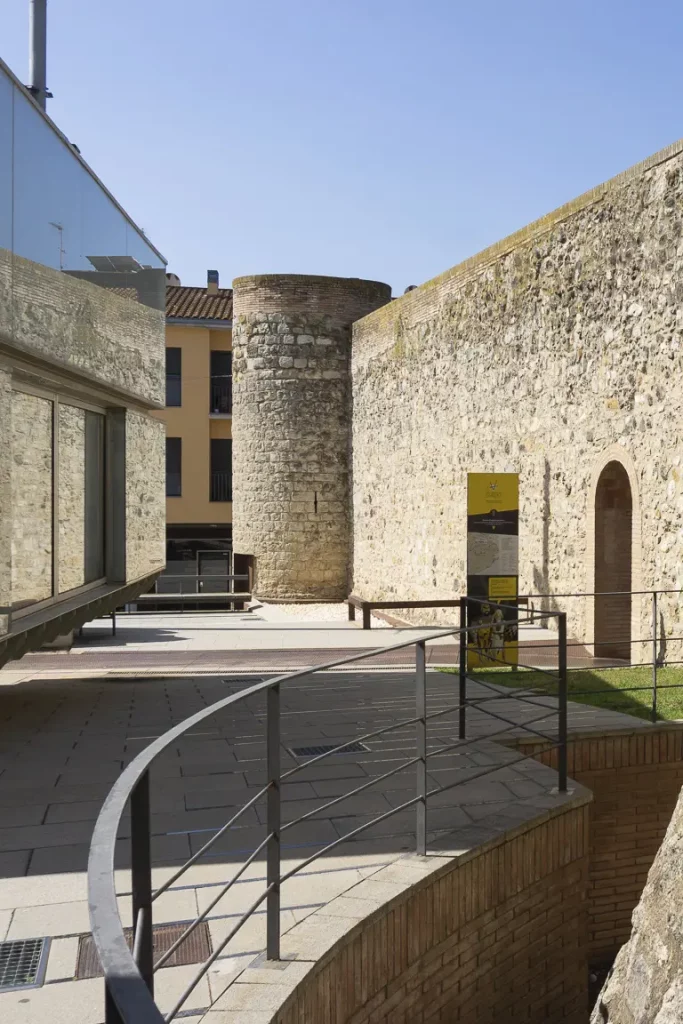
ESPAI AQUAE is a visitor centre that revolves around thermalism, a geological phenomenon with a large presence in Caldes de Malavella. Thermal tourism is a fundamental activity in the current economy of the municipality, it was crucial for the Romans who inhabited the area and it also played a key role in the paleontological site of Camp dels Ninots (about 3.1 million years ago).
In the Espai Aquae you will find areas dedicated specifically to volcanism, to the cycle of our miraculous thermal water, to the use that has been made of it both socially and industrially over time, and to the two large deposits that we have in the municipality; the Roman site of the Roman Baths in Puig de Sant Grau and the paleontological site of Camp dels Ninots.
The Espai Aquae museum center also acts as the Tourist Information Point (PAT) of Caldes de Malavella and depends directly on the Tourist Office. It is a free wifi spot.

The Espai Aquae museum centre is located in the Castell de Caldes, a defensive construction documented since the 12th century. In 1240 it was already part of the viscounty of Cabrera, after Jaume I ceded it to the castle of Llagostera. From the 14th to the 18th century it was attached to the barony of Llagostera, which was in the hands of the Montcada family. The property remained until the 18th century, when it passed to the Earl of Montagut.
The castle occupied a large part of the Puig de Sant Grau, where there had been Roman baths at least until the 4th century. The few vestiges that have been preserved of the fortification indicate that it must have been a construction with its own wall, flanked by towers. We have reports that from the 16th century part of the Castle’s outbuildings were used as a hospital. The complex was demolished between the 18th and 19th centuries, although the eastern sector of the wall that surrounded it remained, which preserves three towers. The wall is made of squared ashlars, with the presence of loopholes and the atalus base.
At that time the State, which had the public domain, auctioned this space and from the 19th century several outbuildings were built attached to the wall, one of which has a Gothic arched window. These spaces converted into homes were sold from 1880 to the industrialist Pau Estapé who acquired the entire area of Puig de Sant Grau, including the Casa Rosa (then called Dieta-Levi) for the exploitation of the thermal waters, first with the name of Xala water and later with the name of Aigua Imperial.
In the 1980s it was converted as a municipal clinic until the construction of the current CAP in Plaça dels Donants in 2009.









© Ajuntament de Caldes de Malavella 2025
The municipality of Caldes de Malavella has very special geological characteristics: it is located on a set of faults that extend over a large part of Europe that have generated a series of volcanic eruptions in our territory.
There are several volcanic outcrops. A chimney formed by prismatic basalts from 4.4 million years ago is located on the Puig de Sant Maurici. On both sides of the railway, near Can Teixidor, very altered basalts surface, with a chronology that we could place in the Pliocene (between 5.3 and 2.5 million years ago).
Finally, the volcanic building of Camp dels Ninots, located in the southwest of the municipality, has a chronology of 3.2 million years ago.
The Caldes water originates from infiltrating rainwater from the interior of the Selva region towards the depths, through the faults and cracks in the subsoil. When this water reaches a depth of about a thousand metres, it heats up, changes its chemistry, acquires carbon dioxide and rises to the surface. This process can last between 30 and 50 years. During this time, as the water filters, it acquires the minerals from the granite rocks in the subsoil.
In Caldes there are three areas where thermal water emerges: Puig de les Ánimes, Puig de Sant Grau and Puig de les Moleres
The existence of the thermal waters and their proximity to the Via Augusta are the key to understanding the emergence of an important spa activity in Roman times in the town of Caldes de Malavella.
The population centre formed around the thermal grounds received the name Aquae Calidae (“hot waters”) and was important enough to be considered, as early as the 1st century BC, a municipality under Latin law. In addition to the spas and the services that were related to them, the Roman city of Caldes de Malavella also had an administrative, religious, economic and commercial centre.
The urban centre of Aquae Calidae, of which some structures are preserved, was located between the Puig de Sant Grau and the Puig de les Ànimes.
The eminently rural character of the town of Caldes de Malavella underwent very important transformations at the end of the 19th century. The emergence of the great European spas, especially in France and Germany, as summer centres for the wealthy societies of the time, linked to the naturalistic tradition of the period and marked by a revaluation of the healing properties of thermal waters, aroused the interest of the Catalan bourgeoisie in this new form of recreation. The creation of spas in Catalonia and, logically, in Caldes de Malavella can be understood as the result of this interest.
The well-known properties of the thermal water of Caldes de Malavella that was offered in the spas motivated those who were not staying in those establishments to also want to have it, and this fact encouraged it to be bottled and distributed in many places. In this way, patients who could not afford the luxury of going to spas had the possibility of benefiting from the effects of this water by following the treatment from their homes.
In Caldes de Malavella, the archaeological tradition goes back a long way. In 1876 Mr. Manuel Viñas, a doctor from Girona, mentions the first archaeological finds that took place in Puig de les Ànimes; abundant archaeological material corresponding to the Upper Palaeolithic period (around 18,000 years ago). The multiple stone tools and remains of hunted animals that have been found there show that the groups of hunter-gatherers who occupied this territory often visited this place that was rich in water and food.
The first archaeological excavations in the Roman baths of Sant Grau, promoted by its owner, Mr. Pau Estapé, were carried out between 1897 and 1902 under the direction of Norbert Font i Sagué. This drive for archaeological research in the municipality is still alive today thanks to the interventions carried out at the Puig de Sant Grau site, the excavations of the Castell de Sant Maurici and the Camp dels Ninots research project.
A space intended to promote the scientific vocation among the school public based on the knowledge provided by the site of Camp dels Ninots, with methods and techniques used in the excavation work at the site of Camp dels Ninots.
Workshops open to the public are periodically scheduled, and it is an activity open to schools and educational centres upon request.
This is a space with several projections that, linked together, last about 45 minutes. You can view a guided tour of the Camp dels Ninots site by the directors of the IPHES archaeological campaigns, a guided tour called “Les Aigües de Caldes” (the waters of Caldes), and some promotional videos of Caldes as a thermal town.
It is a space dedicated to support and research related to the Camp dels Ninots site. In this sense, this area is conceived as a space where the visitor is transported to a real research environment, where they can visit the restoration laboratory of paleontological material in situ.